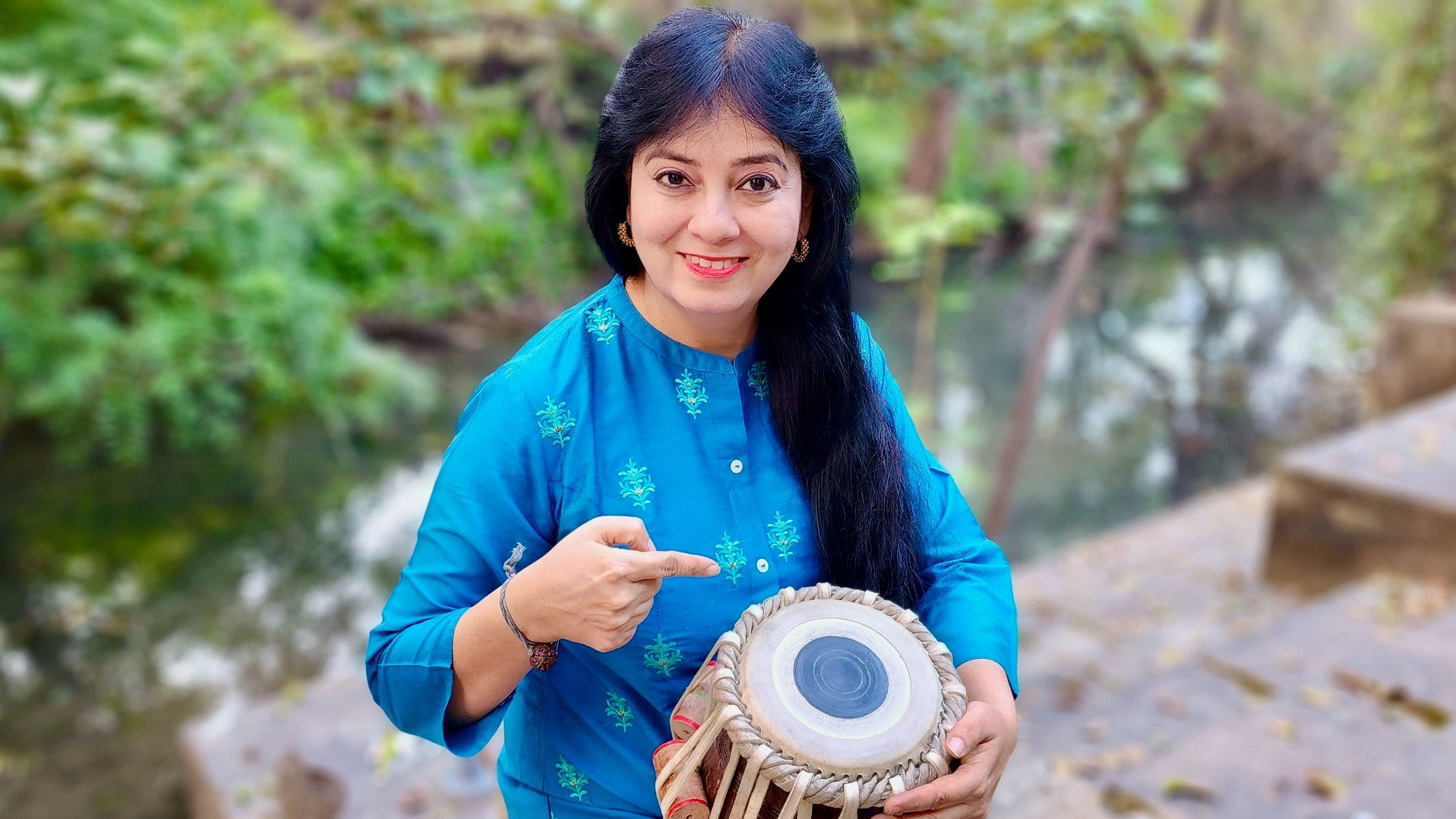
Anuradha Pal
“You are the next after Zakir,” tabla legend Ustad Alla Rakha had declared to Anuradha Pal, referring, of course, to his son Ustad Zakir Hussain when he witnessed her fingers dance on the tabla. She was 15 then. M F Husain, India’s celebrated painter, requested her to compose music for his magnum opus Gaja Gamini (2000). “You have completed my story that I couldn’t with only images,” acknowledged Husain to Anuradha.
At 50, Anuradha, a disciple of Zakir Hussain and one of India’s first female tabla professionals, is often called ‘Lady Zakir Hussain’ in acknowledgement of her precision, timing, intricacies, detailing, balance, speed, clarity, depth and creativity.
These qualities extraordinaire didn’t come easy. Unlike her contemporaries, she didn’t concentrate on “just learning to play fast”. Instead, she utilised her studies in Psychology and Post-Graduation in English Literature to read people and innovate stories on the instrument.
That’s how her innovation ‘Tabla Sing Stories’ came about. Anuradha never grew up playing with dolls but spent her childhood learning chess, table tennis, cricket and horse riding, not to mention training and concerts. The discipline her household insisted on left her with no time to relax. Her only daydream was to have fun and relax until the day a teacher at school “pushed” her onto the stage to play the tabla before a crowd accustomed to rock and jazz.
“I was nervous, but on the spot, I composed bols on the tabla that spoke of my daily routine — of my desire to sleep a bit more but how mom would get angry, wake me up and send me to school. To my utter surprise, students, never exposed to such a rendition, lapped it up and screams of ‘once more’ vibrated the hall. That day, I realised that the tabla can sing stories too.”
Ramayana on tabla
She recently achieved a new feat by creating the entire Ramayana on the tabla. The instruments become her characters who speak in bols, while an aide sings along. “My creations have nothing to do with religion. It took me 10 years to complete this arduous task.”
Anuradha, with her porcelain looks, long hair, and traditional wear, is not someone one would easily associate with aggressive percussion. But this is a woman who, with great ease, crafts classical wonders, sounds of birds, galloping horses and raindrops — all on the tabla. “Yes, it was tough”, she says, recalling the days of relentless practice and training from Zakir Hussain with whom she learnt for over two decades, her fingers breaking in pain, back pleading for rest, and tears rolling down for want of sleep. “I haven’t stopped learning,” she adds.
She is today known as the only ‘chaumukhi’ musician for being adept at vocals, classical, folk, dance, solo and fusion. As someone who can play in all six gharanas of the tabla, she is credited for being the first and youngest woman musician to perform at Woodstock and Womad festivals. She has held numerous concerts in over 30 countries and regularly collaborates with international artists.
Such dedication, however, is never a result of plain fondness for a musical instrument; credit must be given to her family and upbringing. Her mother, Ila Pal, was a renowned writer. Her father, Davinder Pal, was the youngest pharmaceutical baron in Gujarat at 23, and a poet-musician at heart. Her grandfather was an educationist who “didn’t keep a single penny for himself but built over 40 educational institutions”. The story of her grandparents migrating from Pakistan with their four children, wading through water, is heart-wrenching. No wonder, Anuradha runs several charities for uplifting obscure musicians.
Her latest creation ‘Tabla Tonic’ is a fusion of traditional tabla beats entwined with the pulsating energy of EDM, and enriched with the harmonious blend of violin, bass, guitar, djembe and drums. It was released earlier this year.